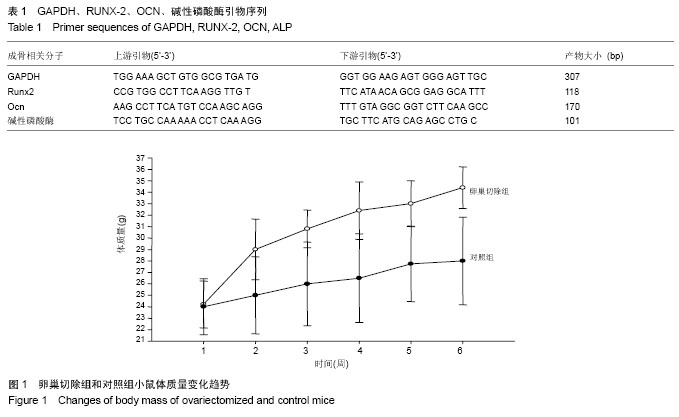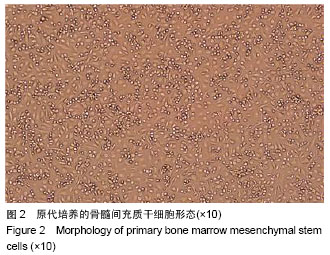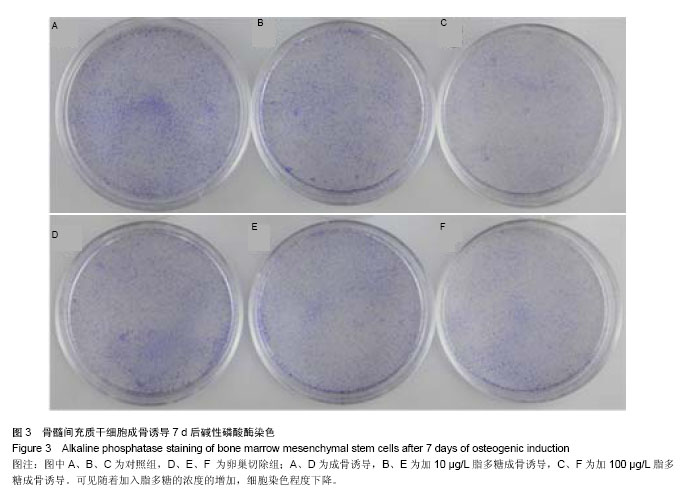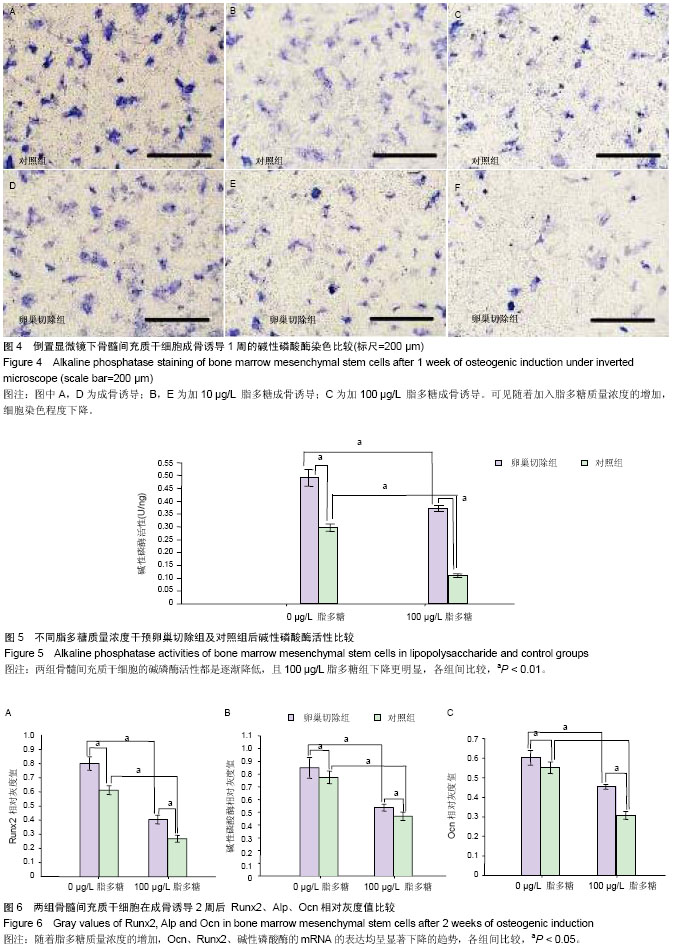中国组织工程研究 ›› 2014, Vol. 18 ›› Issue (14): 2219-2225.doi: 10.3969/j.issn.2095-4344.2014.14.014
• 骨髓干细胞 bone marrow stem cells • 上一篇 下一篇
脂多糖干预卵巢切除小鼠骨髓间充质干细胞的成骨分化能力
刘大勇,王梅蕊,兰玲玲,赵梦明,贾 智
- 天津医科大学口腔医院牙体牙髓科,天津市 300070
Lipopolysaccharide effects on osteogenic differentiation of bone marrow mesenchymal stem cells derived from ovariectomized mice
Liu Da-yong, Wang Mei-rui, Lan Ling-ling, Zhao Meng-ming, Jia Zhi
- Department of Endodontics, Hospital of Stomatology, Tianjin Medical University, Tianjin 300070, China
摘要:
背景:骨平衡被打破造成的绝经后骨质疏松往往是由炎症因子的升高造成的,在牙周组织中,炎症致病菌可产生破坏宿主组织的毒性因子,如脂多糖、菌毛、凝集素等。 目的:通过建立卵巢切除小鼠骨质疏松的模型,观察脂多糖刺激下骨髓间充质干细胞成骨分化能力的改变,初步探讨雌激素缺乏患者易患牙周炎的细胞分子生物学机制,为绝经后妇女牙周炎的防治提供实验基础。 方法:30只雌性昆明小鼠随机均分为卵巢切除组和对照组。取两组小鼠的骨髓间充质干细胞进行成骨诱导,同时加入不同质量浓度脂多糖(0,10,100 μg/L)刺激,检测碱性磷酸酶染色、茜素红染色以及碱性磷酸酶活性;RT-PCR之后检测成骨相关分子Runx2、Ocn、Alp的表达。 结果与结论:成骨诱导7 d后可表达碱性磷酸酶,21 d后茜素红染色阳性,可形成矿化结节。检测发现成骨相关分子Ocn、Runx2、Alp的mRNA在成骨诱导后均有表达;3种目的基因在100 μg/L脂多糖作用下表达显著下降(P < 0.05),卵巢切除小鼠骨髓间充质干细胞在脂多糖作用下3种基因表达较对照组下降显著(P < 0.05)。卵巢切除小鼠骨髓间充质干细胞的成骨分化能力下降;脂多糖使骨髓间充质干细胞的成骨分化能力下降,卵巢切除组小鼠骨髓间充质干细胞成骨分化能力在脂多糖作用下明显减弱,这可能是雌激素缺乏导致牙周炎易感性增加的细胞分子学机制之一。
中图分类号:



